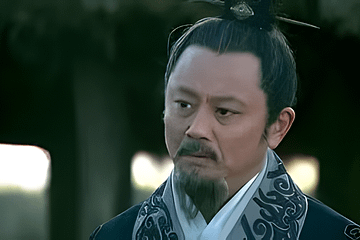When it comes to public housing and affordable housing systems, the Song Dynasty did a good job. In principle, during the Song Dynasty, there was no distinction in housing. Officials in the capital, regardless of rank, all rented housing for residence, including high-ranking officials like prime ministers. Occasionally, there were “gifted residences,” which were only given to department-level leaders and generals with military achievements. Overall, the rate of homeownership was not high for everyone. In the early years of the Southern Song Dynasty, a large number of refugees poured into Hangzhou. At one point, one million people lived in the 30 square kilometers of Hangzhou City, with a population density close to that of Puxi in Shanghai. Due to the high population density and limited land, housing prices were high, and residents commonly rented public housing. In addition to large-scale public housing rentals, the Song Dynasty also had a housing relief system:
- In times of disaster, citizens renting public housing were exempt from rent.
- The government built houses (Futian Court, Juyang Court) to accommodate refugees and the extremely poor for free.
- They also constructed simple houses that were of lower quality than public housing but had lower rents, known as “affordable housing.”
Furthermore, the Song Dynasty had Anji Fang—charitable medical care—and Luozeyuan—burial for unclaimed bodies, which was relatively humane.
For civil servants, it was also good to be born in the Yuan Dynasty. When the country was founded, half of the officials in the capital and all local officials were allocated housing, known as “official housing.” Citizens who couldn’t get allocated housing mainly built their houses independently. They didn’t have to buy land to build, as the government allocated official land to them, and they paid monthly rent, called “land foundation money.” When the Manchus first entered Beijing, they also allocated houses to their leaders: First-rank officials received twenty rooms, second-rank officials received fifteen rooms, third-rank officials received twelve rooms, fourth-rank officials received ten rooms, fifth-rank officials received seven rooms, sixth and seventh-rank officials received four rooms, eighth-rank officials received three rooms, and lower-ranking military officers received two rooms each. Estimating around fifteen square meters per room, the sizes ranged from three hundred square meters for first-rank officials to thirty square meters for lower-ranking military officers.
Affordable housing was mainly operated by temples. Land was allocated by the government, building funds were donated by the people, and property maintenance costs could be covered by the incense money. In theory, monks and nuns were not supposed to aim for profits, and combined with religious needs, they were suited to manage this semi-charitable business. Temples in major cities often had thousands of guest rooms for students taking exams, travelers, and people affected by natural disasters to temporarily stay in.
In the play “The Story of the Western Wing,” Zhang Sheng and Cui Yingying stayed in Shanxi for a whole month at the Pujiusi Temple in Yongji County, where Yingying stayed in the West Wing and Zhang Sheng in the East Wing, fully illustrating that love could also blossom in affordable housing. In the Ming and Qing Dynasties, there was another source of affordable housing, which was guild halls. In these gathering places established by outsiders, the rent for guest rooms was quite cheap. The Zhangzhou Guild Hall built in Beijing in the eighteenth year of the Shunzhi Emperor only symbolically charged rent for Fujian people renting there: three wen per month!
Throughout the various dynasties, which dynasty made it easiest to buy a house?
During the Northern and Southern Dynasties, the situation was the most unreliable, with extreme disparities between the rich and the poor. The ordinary residents had incomes of only a few thousand, while housing prices were in the millions. Wealthy tycoons like Xie Lingyun, controlled the market and drove up property prices. As for the Tang Dynasty, it is well known that living in Chang’an was not easy, and the literati were into extravagance. They felt the need for a villa to enhance their poetic inspiration. For example, Wang Wei had his retreat in Wangchuan, Cen Shen had his retreat in Nanxi, Du Mu had his retreat in Fanchuan, and even Bai Juyi himself later bought seventeen acres of land in Luoyang and built the “Lu Dao Garden.”
In the Song Dynasty, the literati Ye Mengde said, “No one has become wealthy without property. If there is good farmland available, buy it without worrying about the high price.” This sentiment was echoed by the landlords and wealthy individuals. They would invest their surplus funds in buying property at any cost. Buying a house in the Ming Dynasty was also not an easy task. In the novel “Jin Ping Mei,” in the fifty-sixth chapter, Ximen Qing’s sworn brothers wanted to buy a house. Their friend calculated the costs, saying, “One storefront, one reception room, one bedroom, one kitchen – four rooms are essential. In terms of silver, it would cost three to four thousand taels.” Even a small house would cost three to four thousand taels. The county magistrate of Qinghe County, a seventh-ranked official, earned only three hundred and fifty taels per year. This means that even if the county magistrate wanted to buy a house, without engaging in corruption, it would take ten years of saving without eating or drinking to accumulate enough money for a house. The speculative bubble in the Ming Dynasty’s real estate market was closely linked to the trend of ostentation.
Although the Ming founder stipulated that no one should build houses beyond their social status, for example, commoners were not allowed to use vermilion paint on doors and windows; ordinary people were not allowed to have more than three rooms; the mansions of meritorious officials could have a five zhang empty space on each side; military and civilian houses could not have more than five or nine rooms; and temples were not allowed to use bracket sets. However, as mentioned in novels, the commoner Ximen Qing “lived in a house of five storefronts and seven sections,” breaking the rules. During the Jiajing period, everyone tried to appear wealthier than they were. People in Zhejiang had to have a living room in their houses, those in Jiangxi had to include animal heads, and in Jiangsu, fashionable furniture and exquisite antiques had to be displayed. By the mid-Ming Dynasty, the price of land in Beijing had risen to two thousand taels per mu, which would equate to tens of thousands in today’s currency.
In the future, property prices in China will become an unattainable dream for most people, and most will no longer care about the fluctuations in real estate prices. Renting will become the norm, and the disparity in rent will be significant based on the location, environment, and quality of the property. Only middle-income families and above will be able to afford good rental properties. Purchasing a house will be a concern for the wealthy class, as middle-income families dare not even think about it. The key lies in the middle class outside the system, who are paddling against the current. If they cannot progress, they may fall into abject poverty.



0 Comments